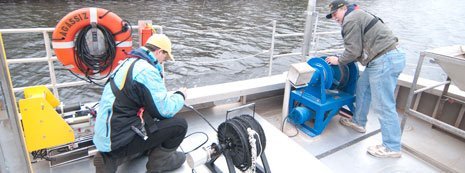Boron can be used to predict trace organic rejection through reverse osmosis membranes for potable reuse
Document Type
Article
Publication Date
11-16-2018
Abstract
Potable water reuse is a viable option for communities with extreme water scarcity. Improvements in measurement capabilities and greater occurrence of contaminants of emerging concern (CECs) have made the investigation of the removal of CECs through advanced treatment facilities essential for further reuse considerations. Reverse osmosis (RO) has been demonstrated to remove many CECs, but poor removal has been observed for many low molecular weight (MW), neutral organic compounds. With the availability of many RO membrane products on the market, it is increasingly important to be able to predict organics rejection through different products without detailed information about the RO membrane’s properties or structure. This laboratory-scale study investigated the rejection of low-MW, neutral organics, boron, and sodium chloride by six RO membrane products. The experimental results were used to develop a correlation between the removal of organics and boron. If the rejection of boron and a neutral organic through one reference membrane is available, then the rejection of that organic through any other membrane product can be estimated using the rejection of boron through that membrane.
Publication Title
Environmental Science & Technology
Recommended Citation
Breitner, L.,
Howe, K.,
&
Minakata, D.
(2018).
Boron can be used to predict trace organic rejection through reverse osmosis membranes for potable reuse.
Environmental Science & Technology.
http://doi.org/10.1021/acs.est.8b03390
Retrieved from: https://digitalcommons.mtu.edu/cee-fp/55


Publisher's Statement
© 2018 American Chemical Society. Publisher's version of record: https://dx.doi.org/10.1021/acs.est.8b03390